His name is all but forgotten now.
But if you had been a newspaper reader in Fort Worth from 1906 to 1924 you probably would have read a newspaper he published and edited.
If you had been a Democrat in Fort Worth from 1909 to 1917, you probably would have voted for him.
And if you had been a high school student in Fort Worth from 1927 to 1940 you probably would have attended an athletic event at the field named for him.
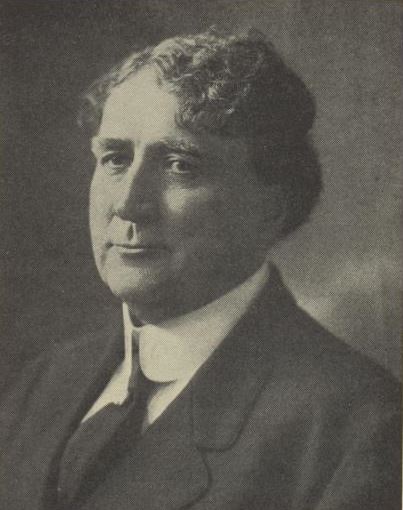 Louis J. Wortham was born in 1859 in Sulphur Springs to William Amos and Elizabeth Ashcroft Wortham. (Photo from Portal to Texas History.)
Louis J. Wortham was born in 1859 in Sulphur Springs to William Amos and Elizabeth Ashcroft Wortham. (Photo from Portal to Texas History.)
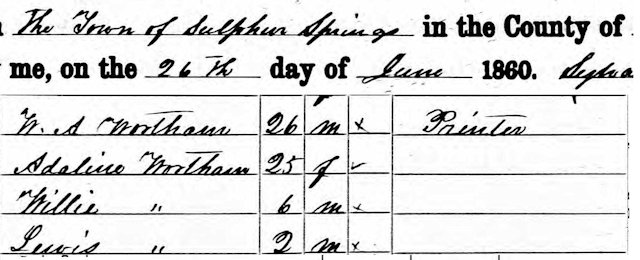 William Amos Wortham was a printer who published the Sulphur Springs Gazette newspaper. Son Louis grew up in his father’s print shop. As a boy he learned to set type, learned the newspaper business from ink to ads.
William Amos Wortham was a printer who published the Sulphur Springs Gazette newspaper. Son Louis grew up in his father’s print shop. As a boy he learned to set type, learned the newspaper business from ink to ads.
Louis later went to Washington, D.C. as secretary to Richard Coke, who was a U.S senator from 1877 to 1895. While in Washington Wortham developed an interest in politics.
Wortham returned to Texas and journalism, working on the Houston Post and Houston Chronicle as an editorial writer and in Mexico City and Washington, D.C. as a correspondent for a New York City newspaper.
 He edited the Wide-Awake in Jefferson.
He edited the Wide-Awake in Jefferson.
 And the Current Issue in Austin.
And the Current Issue in Austin.
 In 1902, after the Texas legislature refused to appropriate funds for a Texas exhibit at the St. Louis World’s Fair of 1904, a group of Texans headed by Fort Worth’s Paul Waples formed the Texas World’s Fair Commission and set about providing, by public subscription, what the legislature had refused to do.
In 1902, after the Texas legislature refused to appropriate funds for a Texas exhibit at the St. Louis World’s Fair of 1904, a group of Texans headed by Fort Worth’s Paul Waples formed the Texas World’s Fair Commission and set about providing, by public subscription, what the legislature had refused to do.
Wortham was general manager of the commission. He toured the state, raising funds for the Texas exhibit and collecting material to promote Texas resources at the fair.
After the fair ended in 1904 Wortham returned to Austin to continue editing the Current Issue, his weekly journal of comment.
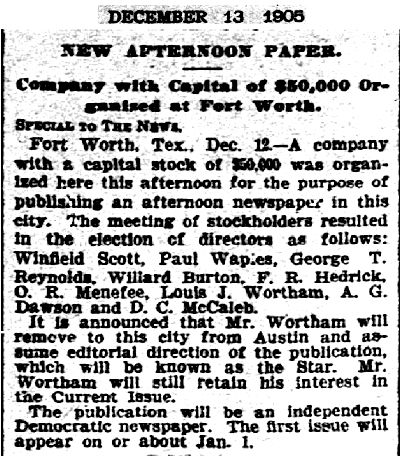 According to Jerry Flemmons in Amon: The Life of Amon Carter Sr. of Texas, late in 1905 Amon Carter and newspaper editors D. C. McCaleb and A. G. Dawson wanted to found an afternoon newspaper to compete with the Fort Worth Telegram. Carter knew sales, McCaleb and Dawson knew journalism. But none of them had money. Carter persuaded Paul Waples to invest. Waples, in turn, brought in Louis J. Wortham as publisher of the Star. Wortham was one of the incorporators of Fort Worth Star Publishing Company with Waples, Winfield Scott, and George T. Reynolds.
According to Jerry Flemmons in Amon: The Life of Amon Carter Sr. of Texas, late in 1905 Amon Carter and newspaper editors D. C. McCaleb and A. G. Dawson wanted to found an afternoon newspaper to compete with the Fort Worth Telegram. Carter knew sales, McCaleb and Dawson knew journalism. But none of them had money. Carter persuaded Paul Waples to invest. Waples, in turn, brought in Louis J. Wortham as publisher of the Star. Wortham was one of the incorporators of Fort Worth Star Publishing Company with Waples, Winfield Scott, and George T. Reynolds.
 With the Star up and running in 1906, Wortham moved from Austin and bought a house on Pennsylvania Avenue on Quality Hill.
With the Star up and running in 1906, Wortham moved from Austin and bought a house on Pennsylvania Avenue on Quality Hill.
The Star published its first edition on February 1, 1906. But the Star soon was losing money. All the local advertising went to the rival Telegram, leaving the Star with national ads for patent medicines. Bankruptcy loomed. Then Carter and colleagues came up with an audacious plan: Rather than fold, up the ante. Waples invested still more money. Ditto merchant W. C. Stripling.
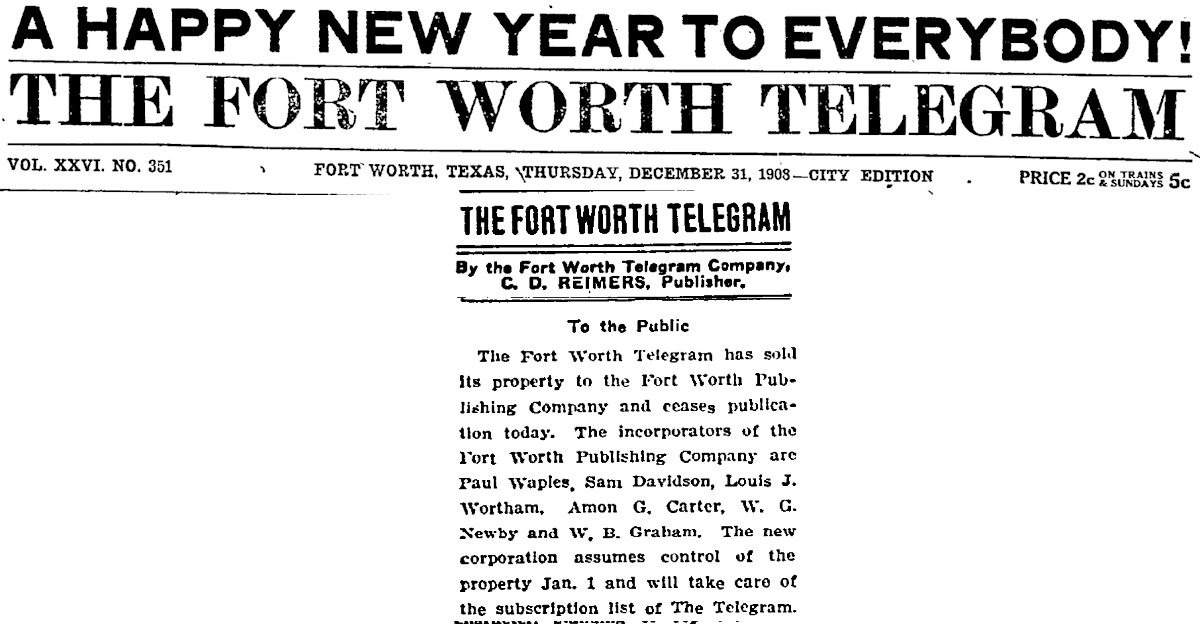 Wortham, Carter, Waples, and others chartered a new company—Fort Worth Publishing Company—and bought the Telegram.
Wortham, Carter, Waples, and others chartered a new company—Fort Worth Publishing Company—and bought the Telegram.
On New Year’s Eve 1908 the final Telegram was published.
 On New Year’s Day 1909 the first edition of the Star and Telegram was published. In the nameplate the Telegram got second billing in terms of both placement and font size.
On New Year’s Day 1909 the first edition of the Star and Telegram was published. In the nameplate the Telegram got second billing in terms of both placement and font size.
 One month later, on February 1 1909, the and was replaced by a hyphen, and the Star-Telegram was born.
One month later, on February 1 1909, the and was replaced by a hyphen, and the Star-Telegram was born.
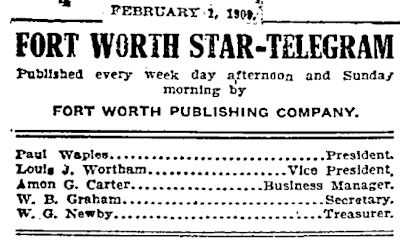 Waples was president, Wortham vice president, and Carter business manager of Fort Worth Publishing Company.
Waples was president, Wortham vice president, and Carter business manager of Fort Worth Publishing Company.
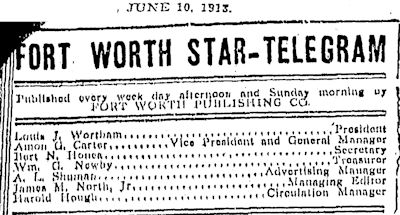 By 1913 Wortham was president, Carter was vice president and general manager.
By 1913 Wortham was president, Carter was vice president and general manager.
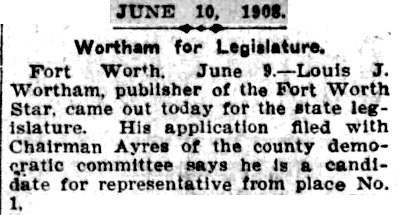 Meanwhile, Wortham the journalist also was wearing the hat of Wortham the politician. He ran for a seat in the Texas House of Representatives in 1908.
Meanwhile, Wortham the journalist also was wearing the hat of Wortham the politician. He ran for a seat in the Texas House of Representatives in 1908.
 He won and from 1909 to 1917 represented Tarrant County in the Texas House as a Democrat.
He won and from 1909 to 1917 represented Tarrant County in the Texas House as a Democrat.
 In 1916 Fort Worth Publishing Company became “Wortham-Carter Publishing Company.” Wortham and Carter retained their titles.
In 1916 Fort Worth Publishing Company became “Wortham-Carter Publishing Company.” Wortham and Carter retained their titles.
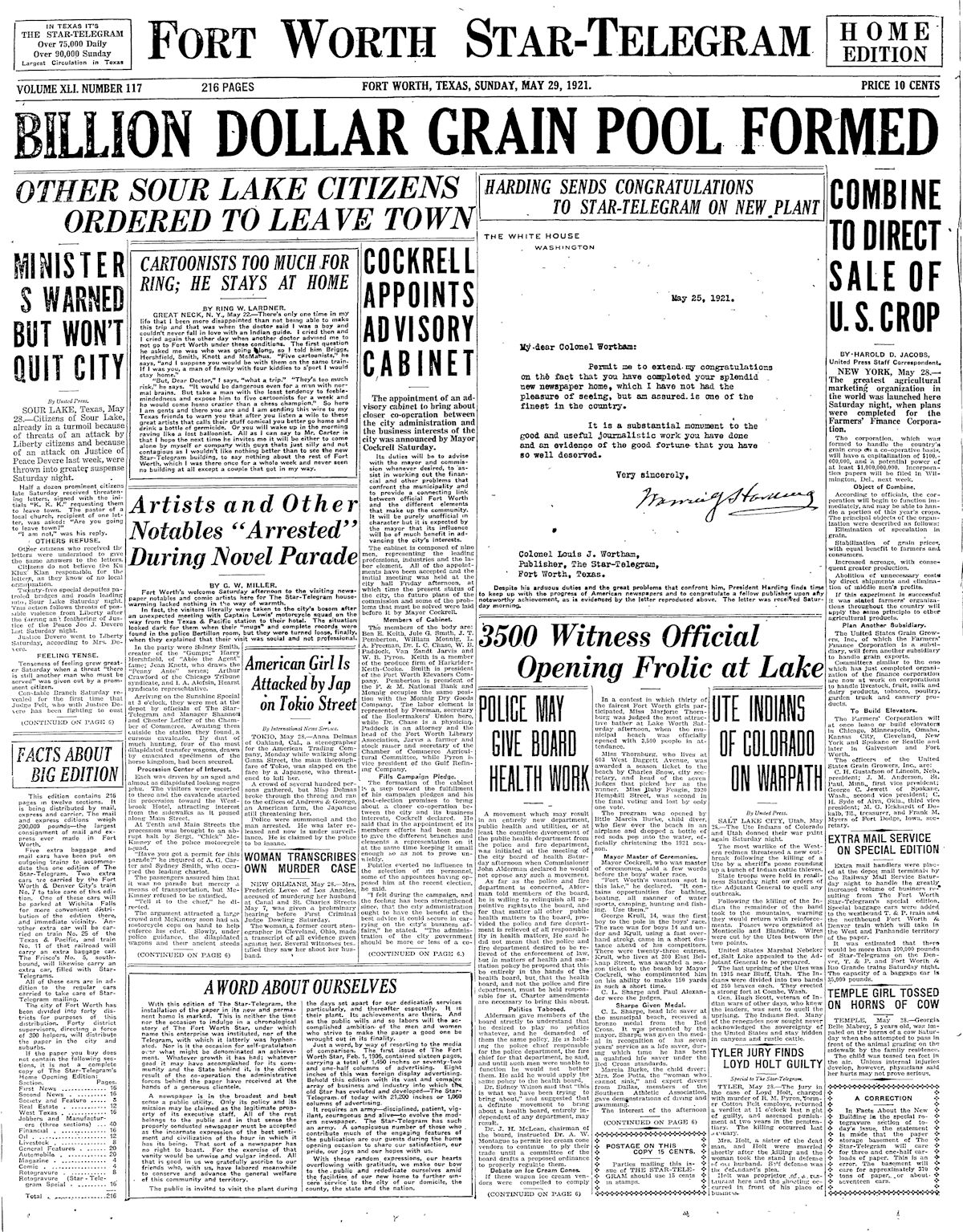 When the Star-Telegram moved into its new home at 400 West 7th Street in 1921, President Harding sent “My dear Colonel Wortham” a letter of congratulations. Wortham by 1921 had attained the southern honorary title.
When the Star-Telegram moved into its new home at 400 West 7th Street in 1921, President Harding sent “My dear Colonel Wortham” a letter of congratulations. Wortham by 1921 had attained the southern honorary title.
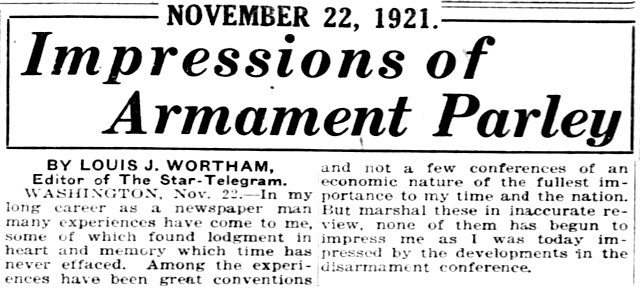 Although Wortham was publisher and president of the Star-Telegram, he retained the title of “editor” and occasionally contributed articles. In 1921 he reported on the disarmament conference in Washington.
Although Wortham was publisher and president of the Star-Telegram, he retained the title of “editor” and occasionally contributed articles. In 1921 he reported on the disarmament conference in Washington.
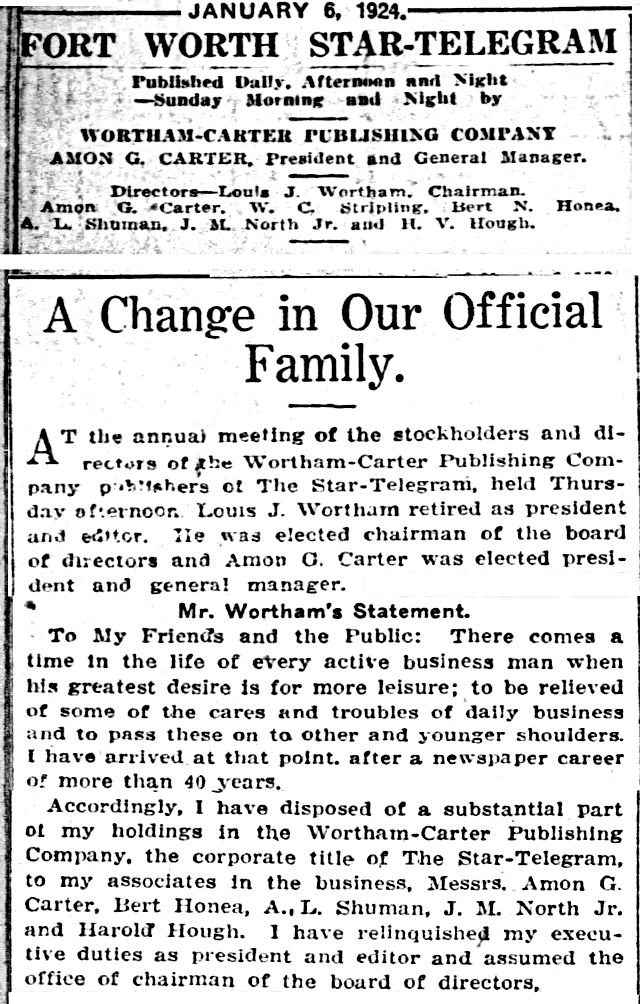 In 1924 Wortham retired, stepping down as publisher and president of the Star-Telegram but remaining as chairman of the board. Amon Carter became publisher and president.
In 1924 Wortham retired, stepping down as publisher and president of the Star-Telegram but remaining as chairman of the board. Amon Carter became publisher and president.
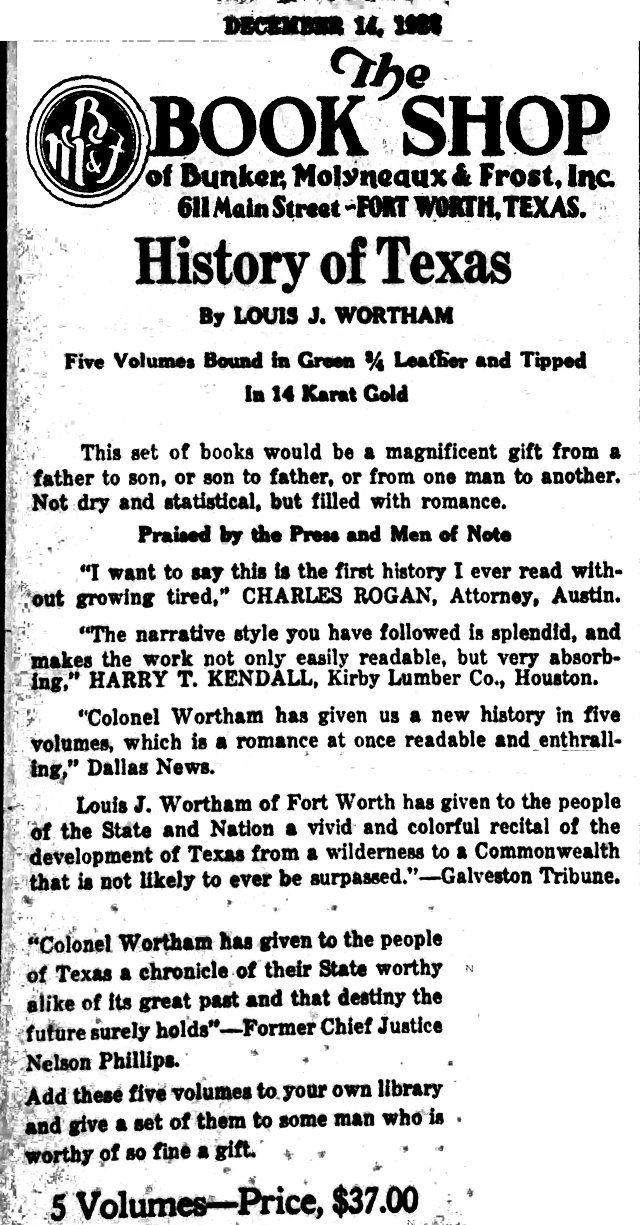 That year Wortham’s five-volume History of Texas from Wilderness to Commonwealth was published.
That year Wortham’s five-volume History of Texas from Wilderness to Commonwealth was published.
Wortham thus became the second Fort Worth newspaper editor within three years to publish a multivolume history of Texas. B. B. Paddock’s was published in 1922.
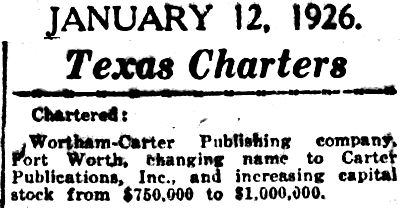 In 1926 the Wortham name began to disappear from the public realm when Wortham-Carter Publishing Company became “Carter Publications.”
In 1926 the Wortham name began to disappear from the public realm when Wortham-Carter Publishing Company became “Carter Publications.”
 After his retirement Louis J. Wortham moved to Greenville, where at age sixty-eight he died on September 10, 1927.
After his retirement Louis J. Wortham moved to Greenville, where at age sixty-eight he died on September 10, 1927.
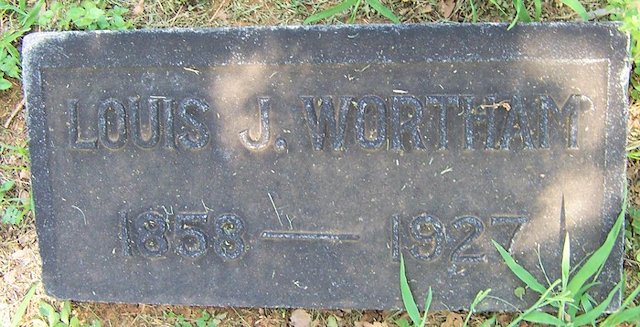 But he was buried in Oakwood Cemetery in Fort Worth.
But he was buried in Oakwood Cemetery in Fort Worth.
Active pallbearers included Star-Telegram colleagues Amon Carter, Bert Honea, A. L. Shuman, James M. North Jr., Harold Hough, and James R. Record.
Honorary pallbearers included Khleber Miller Van Zandt, John P. King, William Bryce, Marshall Sanguinet, Dr. Clay Johnson, Howard Peak, W. C. Stripling, A. S. Dingee, Ben E. Keith, Sidney L. Samuels, General John A. Hulen, and Jacob F. Wolters.
And now the rest of the story:
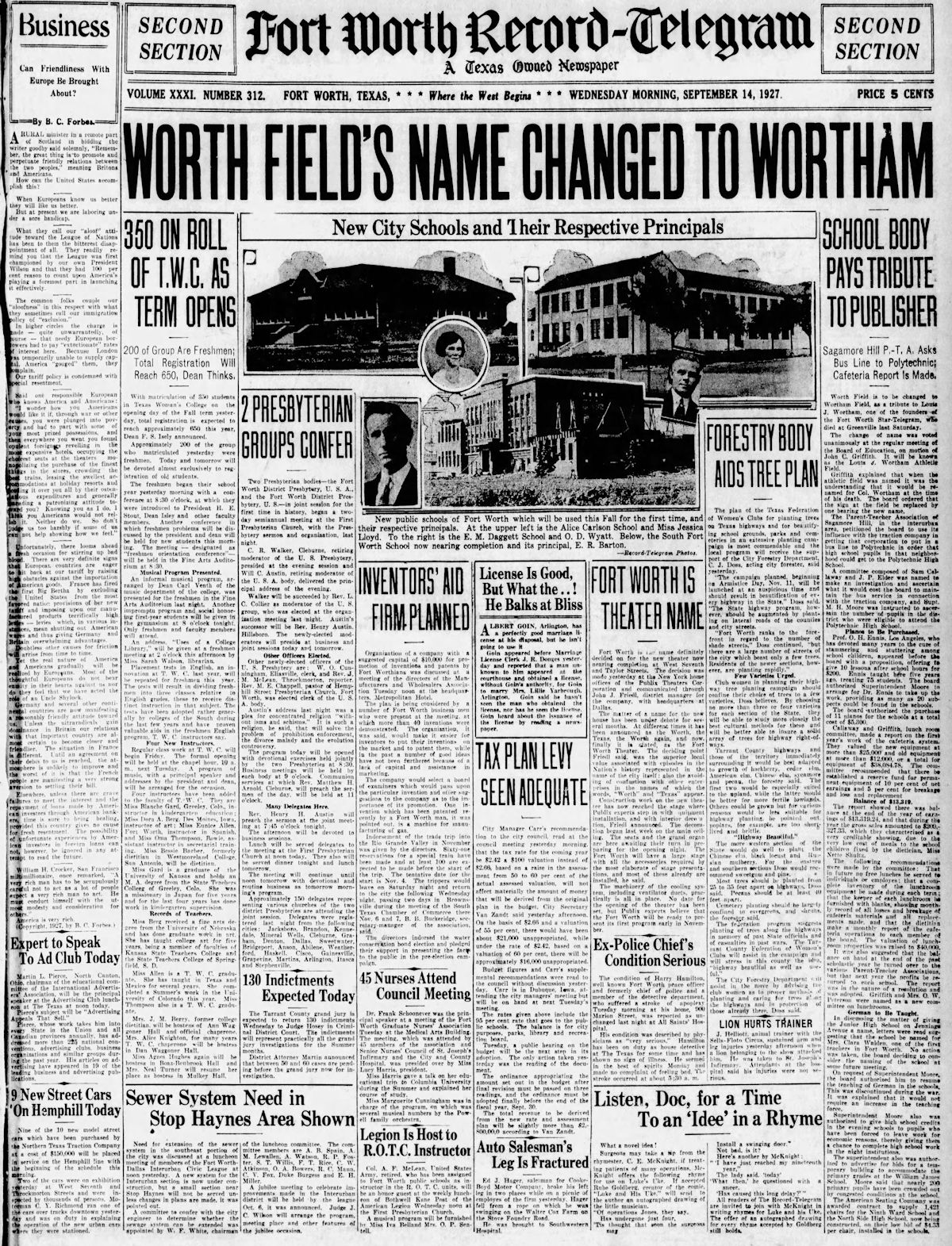 Three days after Wortham died, the Wortham name returned to the public realm as the Fort Worth school board changed the name of the school district’s Worth Field to “Louis J. Wortham Athletic Field.” The field was used for interschool competitions in team sports and track and field.
Three days after Wortham died, the Wortham name returned to the public realm as the Fort Worth school board changed the name of the school district’s Worth Field to “Louis J. Wortham Athletic Field.” The field was used for interschool competitions in team sports and track and field.
Also on the front page was a story about one new school and additions to two schools: new Alice Carlson Elementary School (principal Jessica Lloyd), an addition to E. M. Daggett Elementary School (principal O. D. Wyatt), and an addition to South Fort Worth Elementary School (principal E. R. Barton).
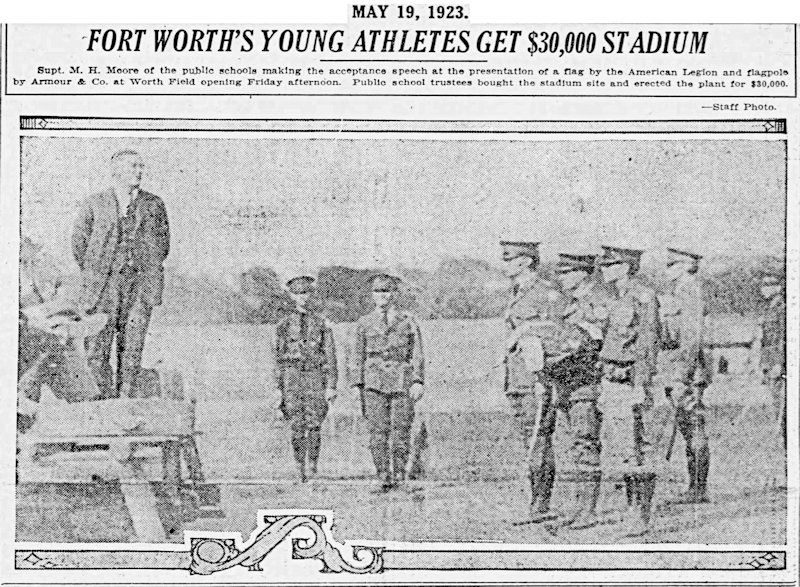 Worth Field had opened in 1923. Superintendent M. H. Moore spoke at the opening ceremony.
Worth Field had opened in 1923. Superintendent M. H. Moore spoke at the opening ceremony.
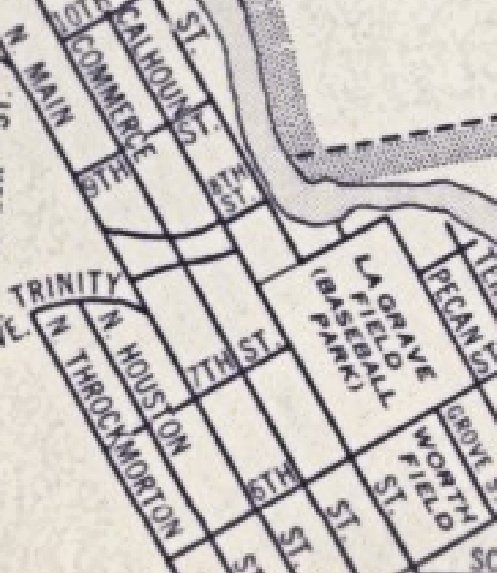 Worth/Louis J. Wortham Field was located just south of LaGrave Field on North Calhoun Street at Northeast 6th Street.
Worth/Louis J. Wortham Field was located just south of LaGrave Field on North Calhoun Street at Northeast 6th Street.
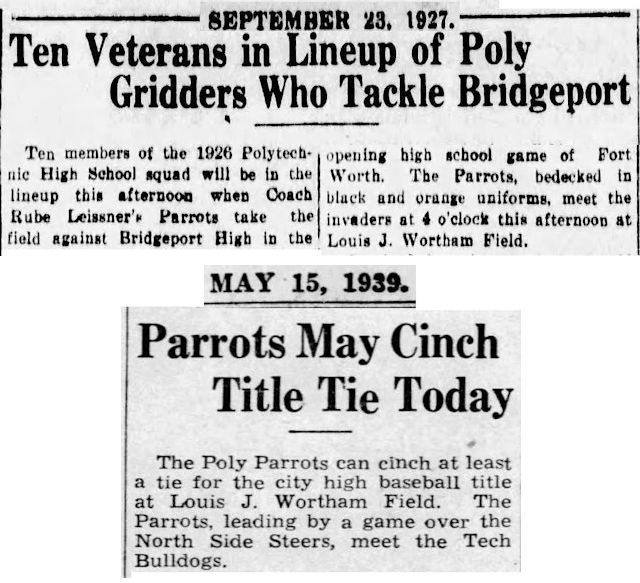 Louis J. Wortham Field hosted hundreds of sporting events from 1927 to 1940. But after Farrington Field opened in 1939, Wortham Field soon closed.
Louis J. Wortham Field hosted hundreds of sporting events from 1927 to 1940. But after Farrington Field opened in 1939, Wortham Field soon closed.
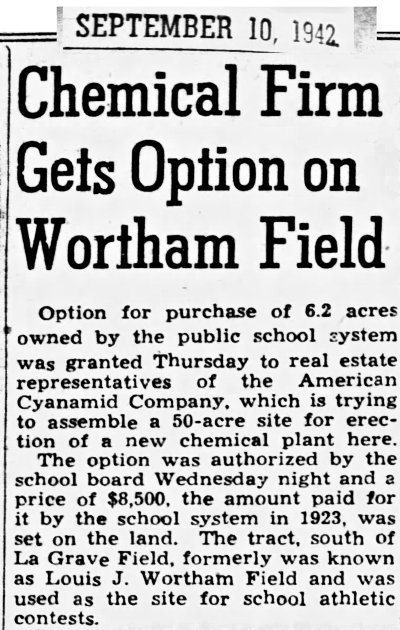 In 1942 the school district sold the Wortham Field property to American Cyanamid. The last public reminder of Louis J. Wortham—man of letters, man of laws—was replaced by a chemical plant.
In 1942 the school district sold the Wortham Field property to American Cyanamid. The last public reminder of Louis J. Wortham—man of letters, man of laws—was replaced by a chemical plant.





